Knitting is often seen as a solitary activity, but there’s nothing quite like the joy and camaraderie found in knitting groups. Did you know that building connections and community is one of the benefits of knitting? These communities bring together people who share a love for this craft, providing a platform for learning, inspiration, and friendship.
Let’s dive into the knitty-gritty of building a knitting community that’s as warm and cozy as your favorite handmade sweater.
What is a Knitting Group?
Before we get ahead of ourselves, let’s clarify what we mean by ‘knitting groups.’ Essentially, knitting groups are get-togethers of individuals who enjoy knitting. Simple as that! They can be formal or casual and meet in a variety of locations: from the comfort of a member’s living room to a local café, park, or even online.
From organized clubs that meet at community centers to a few friends catching up over yarn and needles, knitting groups are as diverse as the patterns they create.
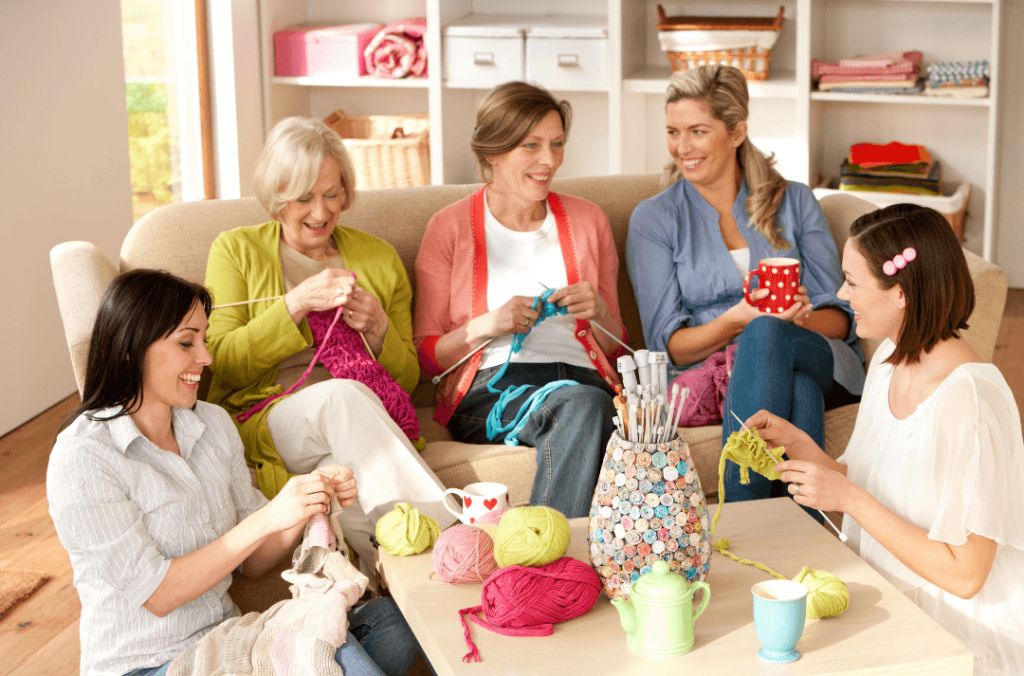
In knitting groups, beginners can learn from seasoned knitters, while experienced knitters find fresh inspiration and challenges. Sharing knitting tips, tricks, and advice is integral to these gatherings.
Also, have you ever noticed that knitters speak a language of their own? These groups are the perfect place to get fluent and learn some knitting definitions!
Local Knitting Groups
Local knitting groups typically meet in person at agreed-upon locations and times. This could be at someone’s home, a local café, the library, or even a park on sunny days.
These groups often start small and grow organically through word-of-mouth. It’s a great way to meet fellow knitters in your neighborhood and build connections in your local community. You can swap tips on the best way to store yarn or different cast-on methods. Some local knitting groups might also engage in charity projects, knitting items for those in need in their community.

Online Forums
In the digital age, knitting groups aren’t bound by geography. There are numerous online platforms where knitters from all corners of the globe can connect, share their work, and discuss their craft.
Websites like Ravelry provide forums where users can post questions, share patterns (and tips for how to read a knitting pattern!), and join specific sub-groups based on their knitting interests.
Here, you can find everything from general knitting groups to groups focused on specific techniques, the best types of yarn, or types of projects. The beauty of these forums is their 24/7 accessibility, allowing you to connect with fellow knitters whenever inspiration strikes.
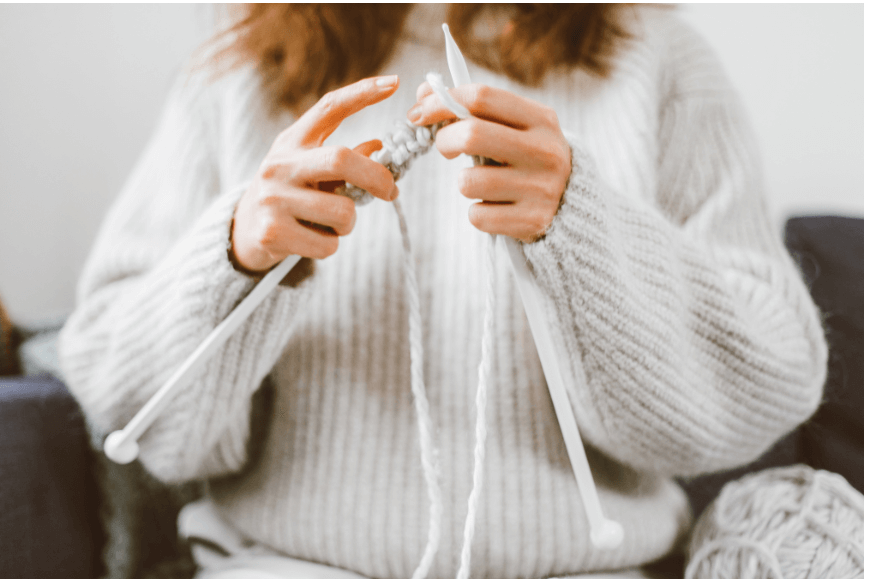
Social Media Groups
Social media platforms have also become popular places for knitting groups to convene. Platforms like Facebook and Instagram provide a visual element, allowing knitters to showcase their creations and engage with others’ work.
These platforms often host various groups, from those focused on beginners to groups centered around specific types of knitting, such as socks, lace, or fair-isle knitting. They also offer the opportunity to participate in global knit-alongs, where knitters worldwide work on the same patterns simultaneously, sharing their progress and finished pieces online.
How to Find Your Local Knitting Group: Navigating the Yarn Trail
Finding a local knitting group may seem like a daunting task, but fret not. There are numerous resources available to help you find a knitting community that fits your interests and schedule.
Here are some useful tips to help you find your local knitting group:
Local Yarn Stores
Your local yarn or craft store is often the hub of the knitting community in your area. These stores usually host knitting groups or can direct you to local ones. They might even have a bulletin board where local groups post their meeting times and locations. If nothing else, the store staff is likely to know of any local groups that you can join.
So, it doesn’t hurt to ask while you’re picking up your essential knitting supplies!
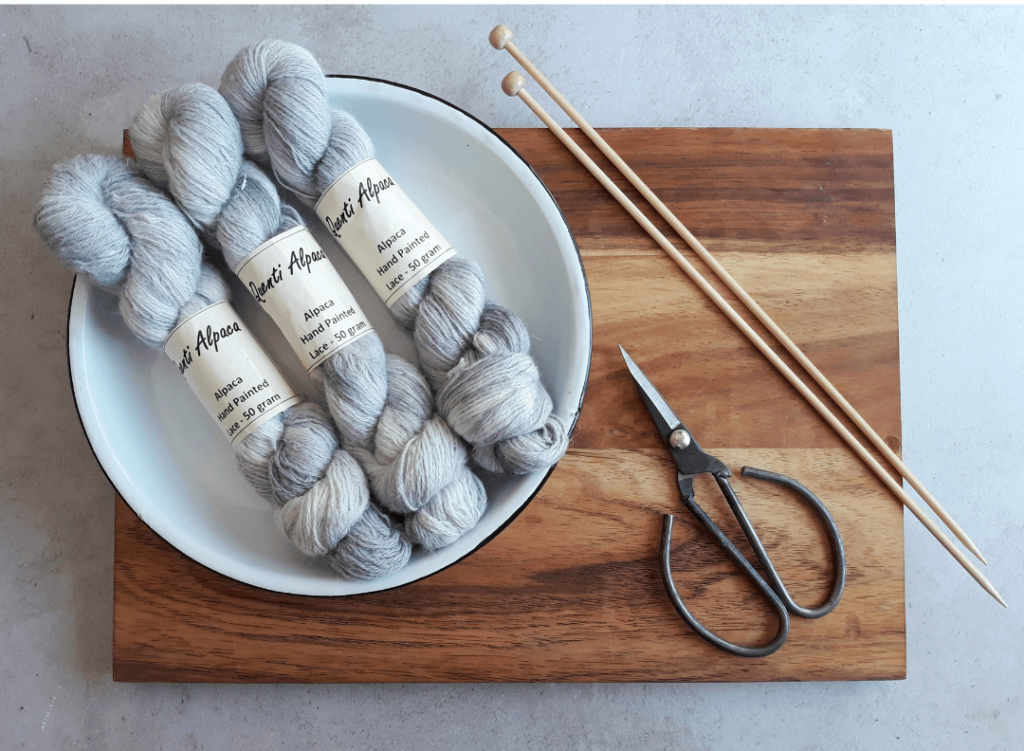
Community Centers and Libraries
Community centers and libraries are other places where knitting groups often meet. Check their events calendar or speak with a staff member to inquire about any knitting-related activities. Libraries, in particular, may offer free knitting clubs or classes, which are great opportunities to learn new skills and meet other knitters. You can find your space whether you’re just learning how to knit or have been at it for decades.
Meetup and Similar Platforms
Websites like Meetup.com can be a fantastic resource for finding local knitting groups. You can search based on your location and interests, and many groups use these platforms to organize their meetings and communicate with members. Similarly, websites such as Eventbrite may list knitting workshops or gatherings in your area.
Social Media and Online Communities
Although we’re talking about local groups, don’t overlook the power of the internet. Local groups often have pages on platforms like Facebook where they post meeting times and other relevant information. Also, check out the local community groups on platforms like Nextdoor, where residents often share information about clubs and gatherings, including knitting groups.
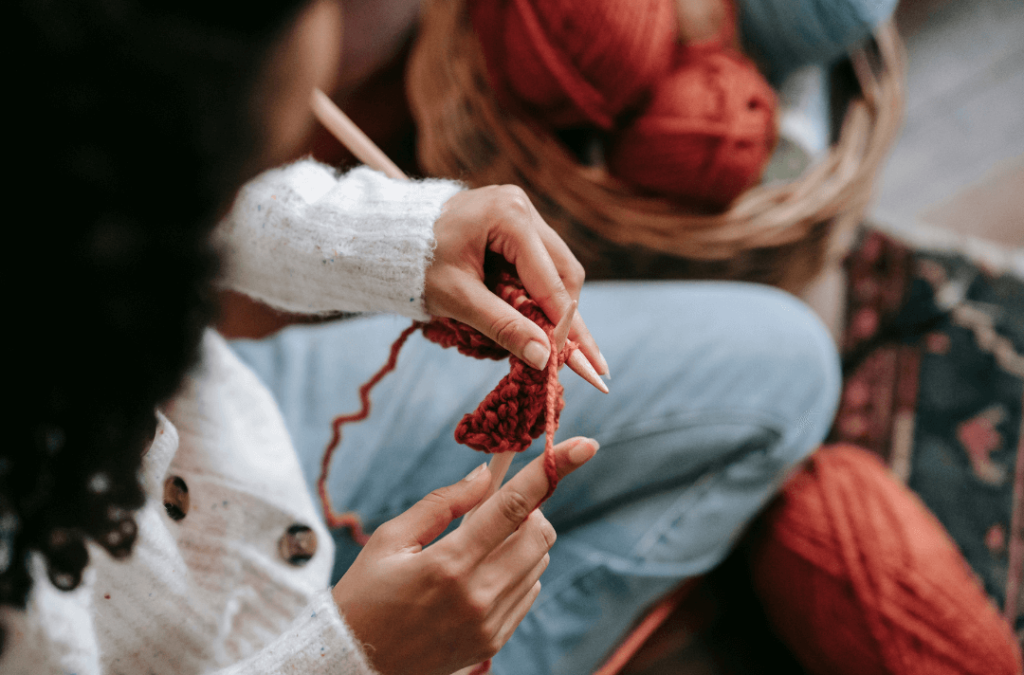
Word of Mouth
Sometimes, the best way to find a local knitting group is simply by asking around. Talk to your friends, colleagues, or neighbors. You’d be surprised at how many people you know may be part of a knitting group or know someone who is.
How to Start Your Own Knitting Group
Starting a knitting group can be a rewarding experience, offering you the chance to form connections with fellow knitters and shape the group according to your interests. Here are some steps to guide you on this exciting journey:
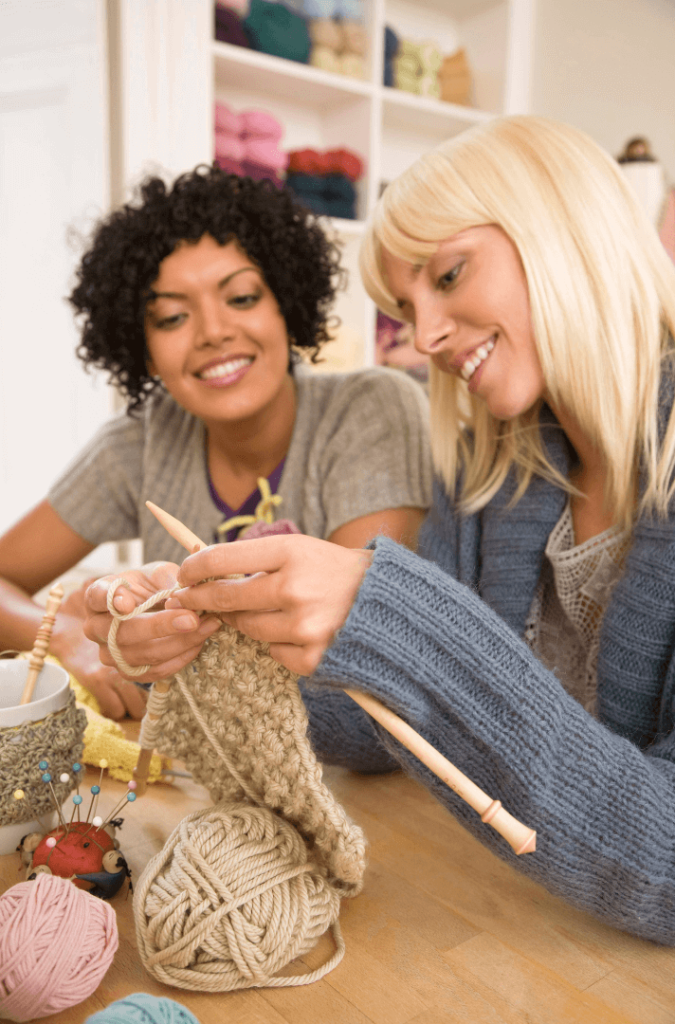
Determine the Structure and Purpose
Before you start inviting people, take some time to decide what kind of knitting group you want to create. Will it be a casual gathering where people knit and chat, or would you like a structured meeting with set projects or learning goals? Understanding your group’s purpose will help you convey the right message when recruiting members.
Decide on a Meeting Place and Time
Your meeting location should be convenient and comfortable for everyone. It could be a member’s home, a quiet café, a local community center, or even a park on a sunny day. If you prefer a virtual format, platforms like Zoom, Google Meet, or Facebook Groups can be ideal.
The meeting frequency and time are also essential. Will you meet weekly, bi-weekly, or monthly? What day of the week and time works best for most members? Keep in mind that the aim is to create a schedule that encourages consistent attendance.
Recruit Members
Starting a knitting group doesn’t require a large number of members. You can start small with a few friends who knit and then grow from there. To recruit more members, you can:
- Use social media: Post on your own profiles, community groups, or local event pages.
- Utilize online platforms: Websites like Meetup.com allow you to create a group and invite others to join.
- Connect with local yarn stores: They might let you post a notice or could mention your group to their customers.
- Word of mouth: Never underestimate the power of personal invitations!
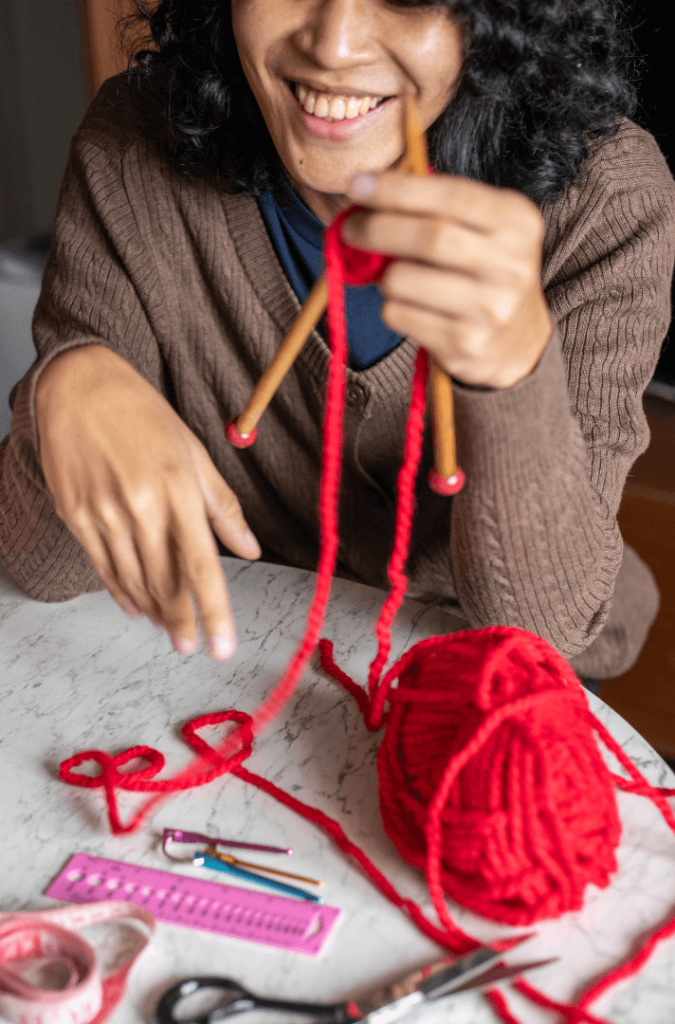
Plan the First Few Meetings
For the first few meetings, it’s good to have a plan. You might start with a simple meet-and-greet for everyone to get to know each other, followed by sessions where each person shares their favorite project or a specific technique. Planning gives people something to look forward to and helps to keep the group engaged.
Foster a Welcoming Environment
Ensure your knitting group is a welcoming, inclusive space. Encourage members to share their ideas and respect everyone’s skill levels. It’s not just about knitting; it’s about building friendships and creating a sense of community.
Keep Communication Open
Once your group is up and running, maintain regular communication. You could create an email list, a Facebook group, or a group chat to share updates, reminders, and knitting resources. Regular communication keeps everyone involved and strengthens the community.
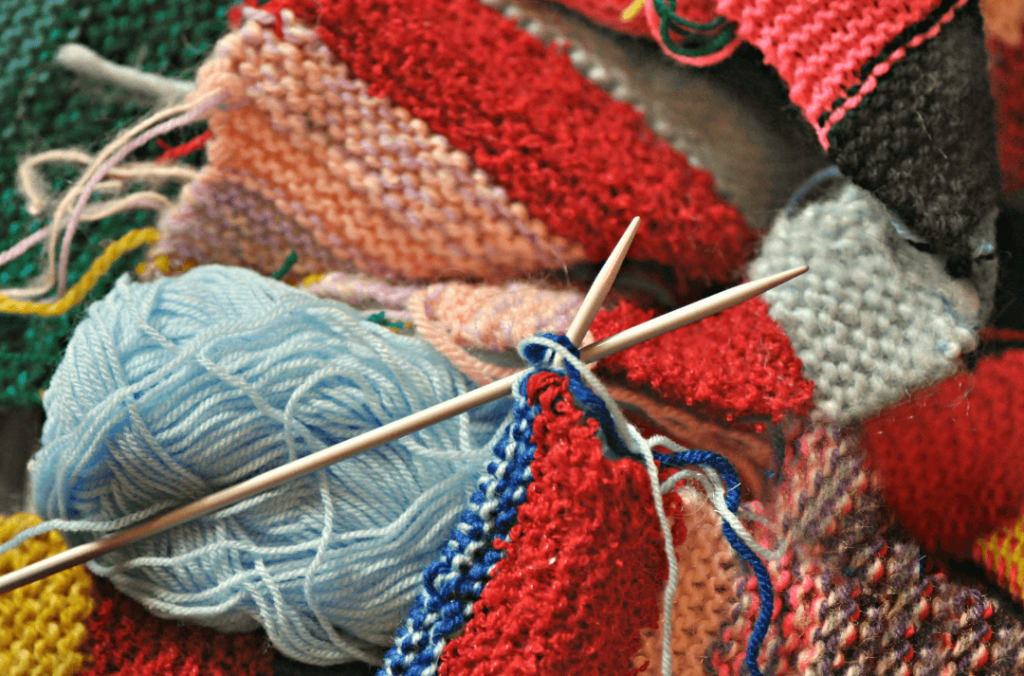
Conclusion: Weaving It All Together
Knitting groups are more than just about knitting; they’re about friendship, learning, and fun. Building a knitting community brings a sense of belonging; there’s nothing like seeing a project come to life while surrounded by friends who share your passion.
So whether you’re a novice or a seasoned knitter, join a knitting group or start your own, and watch as your skills, project list, and friendships grow. Happy knitting!

